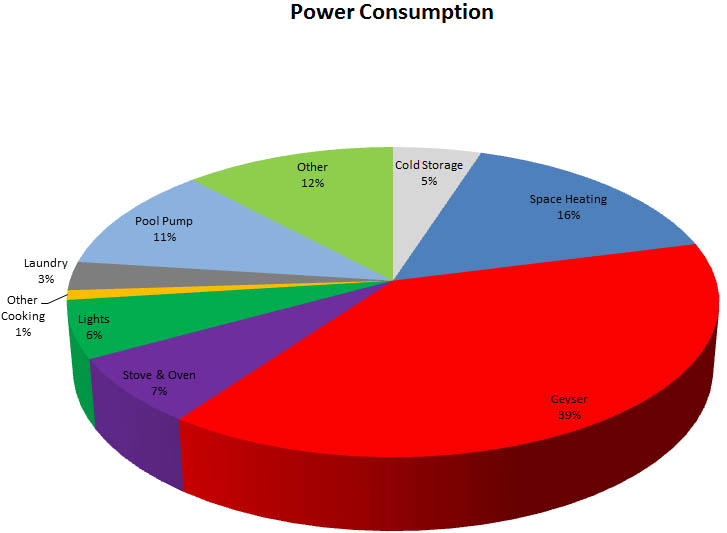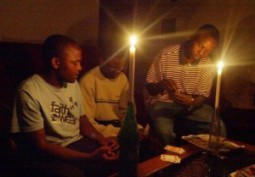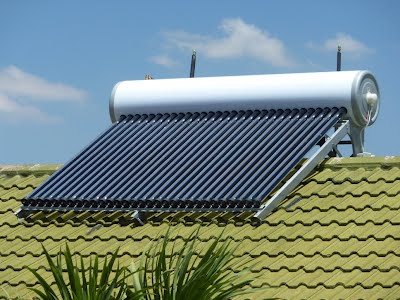As a citizen with an interest in national energy matters I have been following issues regarding the recent re-introduction of power cuts by ZESA, the country’s sole utility with particular interest. Though most residents have resorted to complaining against the utility, the reality of the matter is that the country lacks capacity to generate enough energy to meet demand.
I however have no intention of discussing matters relating to the national utility’s limited power generation capacity. Rather I would like to bring to your attention how solving this perennial problem can bring mutual benefits to homeowners, the nation and the planet.
Power Consumption
Most local homeowners are oblivious of how much energy is required every month to supply their home appliances and electronics. Consumers consistently report of receiving hefty or rather unreasonable bills at the end of every month. There are however no mysteries to your electricity bills as you pay for what you use in the case of prepaid metering. Homeowners without prepaid meters are subject to estimates based on their historical monthly consumption (appears in kWh from the last monthly meter reading) which is then multiplied by the current tariffs. Nothing is far from the truth.
Water Heating
The largest single power consumer in an average Zimbabwean home is the electric geyser. As shown in the pie chart, up to 40% of your electricity consumption constitutes of domestic water heating and with cooking and lighting also being major contributors. To control the energy usage national utilities including ZETDC recommend switching off geysers and use of geyser timers. Most consumers do not find the time to perform the task regularly and are often perplexed at the sight of their energy bill.
A basic electric geyser consists of a 3 000W/3kW element that heats water stored in a 150 liter water tank. Heating the water from an ambient temperature of 25 degrees to 65 degrees will require at least 2 hours 40 minutes. The element reheats water twice a day making the total electric geyser consumption period more than 5 hours. Lights will consume less significant power and their consumption is distributed around rooms inside the house and are normally switched off at bed time.
ZESA gazetted new tariffs in June of 2013 which include the introduction of new demand charges for heavy power users. Heavy usage here being consumption of electricity beyond 300kWh or about $30 with prepayment metering for domestic consumers. ZESA tariffs range from $0.02/kWh to $0.15/kWh depending on usage. A simple calculation will show that your geyser will draw more 15kW per day (450kW per month) placing you in the heavy user bracket. Thus more than $600 every year or about $52.50 a month is spent heating water only.
A National Issue
Today the ZETDC estimates that over 100 000 electric geysers are plugged to the electricity grid. Should they be switched on simultaneously, these geysers will gobble more than 25% of the electricity generated by the country. However projections approximate that 63MW of electricity on the grid is consumed every second by electric water heaters in Zimbabwe. This 63MW is enough to light up the whole of Gweru and Kwekwe at any time of the day.
The Solution: Solar Water Heating
Solar water heating is a tried and tested renewable energy technology that makes practical and economic sense as an alternative to water heating. A typical solar water heating system consists of a tank and solar collectors that gather the sun’s energy. The collectors transfer energy from the sun to heating the water. The insulated tank normally positioned just above the collectors keep the water hot overnight losing only 3% of the heat. Solar geysers can function in the cloudiest of days with an electrical element used as back up in the case of heated water not meeting demand.
Today solar water heating has become popular across the globe and are usually visible in middle to high income residential areas in Zimbabwe. Using a solar water heater largely benefits the consumer as it evades at least 40% of electricity bills as well as a consistent hot water supply during power cuts.
Key Benefits
- Reduced electricity bills
- Reliable water heating source during power cuts
- Contribution towards greening the environment (one geysers saves the earth of pollution equivalent to removing one Nissan March off the road every year)
- Increases the value of your property
Return on Investment
Given the dynamic tariff regime introduced by ZESA, it makes absolute sense today to invest in a solar geyser. The table below shows how much energy consumption is attributable to an electric geyser and the cost for a single household of four people.
ZESA Domestic Tariffs
| Energy Used | Tariff ($/kWh) |
| 1st 50 kWh | $0.02 |
| 51kWh to 300kWh | $0.11 |
| Balance | $0.15 |
Key: 1 Unit=1kWh=100W appliance using power for 10 hours
Geyser Consumption
Total geyser consumption every month will be 3kW x 5 hours x 30 (days) = 450 kWh. Compare with ZESA estimation here http://www.zesawest.com/usage.html. The table below shows electricity that will be consumed by your geyser alone.
| Energy Consumption | Cost | |
| 1st 50 kWh | $1 | |
| 51kWh to 300kWh | $27.50 | |
| Balance | $22.50 | |
| Total | 450kWh | $51.00 |
Every month your electric geyser will cost you beyond $50 amounting to more than $600 every year. Supply and installation of solar geysers systems will cost at least $800 for 100 liter system to about $1700 for a 200 liter system. With annual electric geyser consumption way beyond $500 the payback period of a solar geyser is reduced to less than three years. Given that the system will last you more than fifteen years, you are guaranteed more than a decade of free hot water and reduced bills.
Installing a solar water heater on your rooftop therefore not only saves you money but also addresses pertinent environmental and national energy issues. ZETDC is also at the forefront in promoting solar water heating as part of their Demand Side Management policy.
In articles to follow I will discuss other solar energy and energy efficiency practices that make economic and practical sense.
This guest article was authored by Itai Hillary Zimwara, a co-founder of Solarsky, a company that deals with solar installations.
Source of Data: Eskom
Image sources: “Nehanda News, Solartubs “




12 comments
very good article. so has company made any inroads on expanding the solar project to a national level were households will have to sell solar energy to provide to the national grid? because we have realised that people are arrogant and do not want to change their habits of “misusing” electricity or rather should i say ignorance.
I don’t think Zimbabwean law allows backfeeding into the grid from consumers just yet.
switching off your geyser and switching it on does not reduce your bill.(case study and a project done during varsity years) a geyser power management system or a solar geyser is the perfect solution
Yes but reduces incidental demand, hopefully peak demand
You beat me to it. It certainly does reduce your bill. But the benefit of it should fit in with peak household demand. Bathing!
Switch on when going to bed, switch off when you wake up. With an average geyser and a family of 4 grown human beings and 2 kids, you can all have hot water without swimming in the tub or showering for decade ofcourse.
It will be warm for most of the day.
One can also install a timed-switch that, say switches on and off in two phases. You can have this put in your switchbox by an electrician is you’re scared.
5AM to 6AM
5PM to 6PM
An hour will be enough to heat the water.
Good article, but i think the heading is misleading…I had hoped there will be a couple of alternative solutions. Title should have been something like “Solar water heating – an alternative to Zesa”
Interesting… For us scholars in energy we know for a fact that switching off your geyser at peak demand will not in any way reduce your electricity bill but it will certainly reduce pressure on the grid and as such reduce loadshedding. Like the author said, solar geysers MAY be a solution if they are rightly priced! Photovoltaic systems are generally expensive and will prove to be an expensive option when wanting to reduce the household energy expenditure. This is because local entrepreneurs who are supplying these solar-thermal products are overpricing these products. Solution is for the country to roll out these products on a national scale like South Africa has done…
what you mean is that it will be an expensive option fiscally but in ‘fact’ it is a cheaper option if you want to reduce the monthly/annual household energy expenditure. Unless if it is costly to maintain the systems overall ,i dont know m not an expert.
[…] portal can also give tips and tricks of how people can save power, use alternative electricity and information on how and where people can buy prepaid electricity […]
[…] portal can also give tips and tricks of how people can save power, use alternative electricity and information on how and where people can buy prepaid electricity […]
[…] everyone) should plan for another 3 weeks of intense use of their generator/ invertor/ solar cell (or any other alternative). Then again, as long as you want to stay connected in Zimbabwe, its better to have one of these […]
I have a question. I use gas for everything except lights tv, fridge, iron n co tenants use electricity for everything, should we pay the same amount for zesa